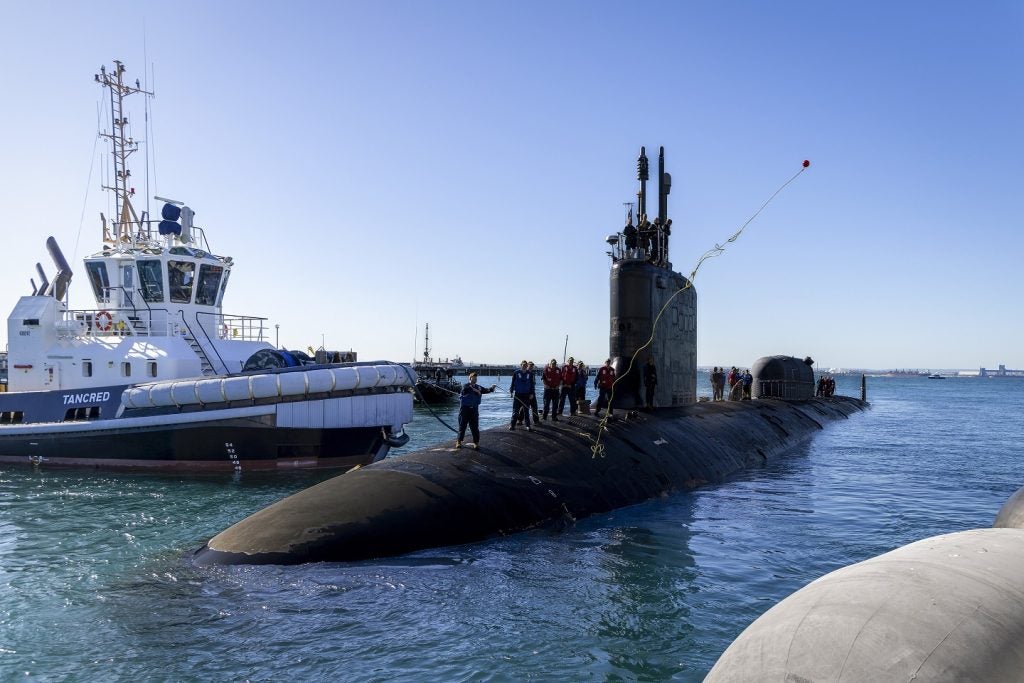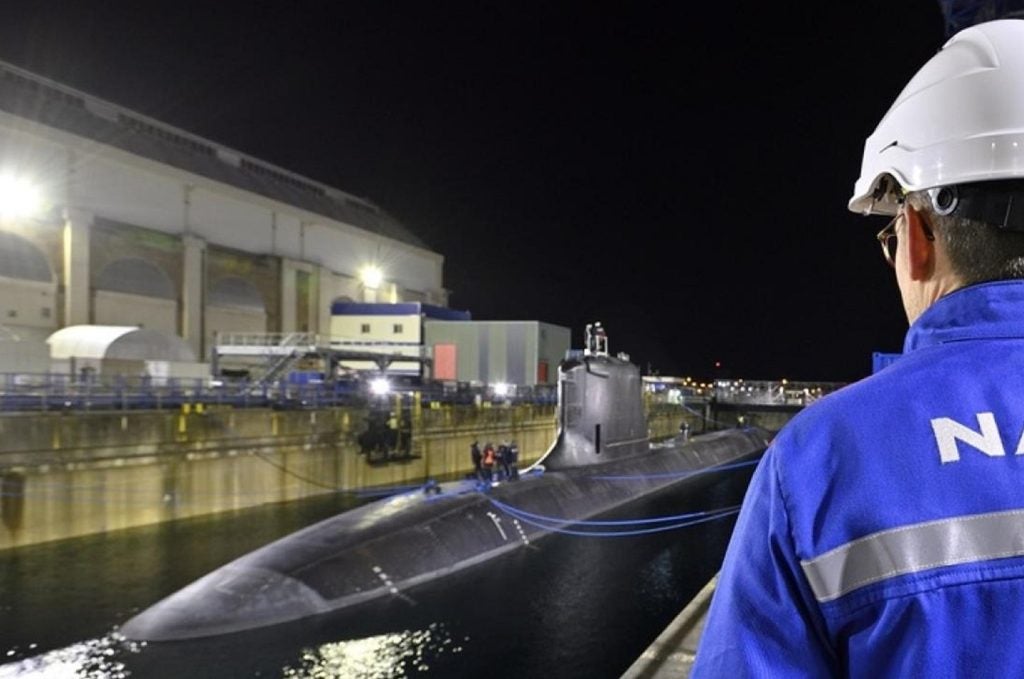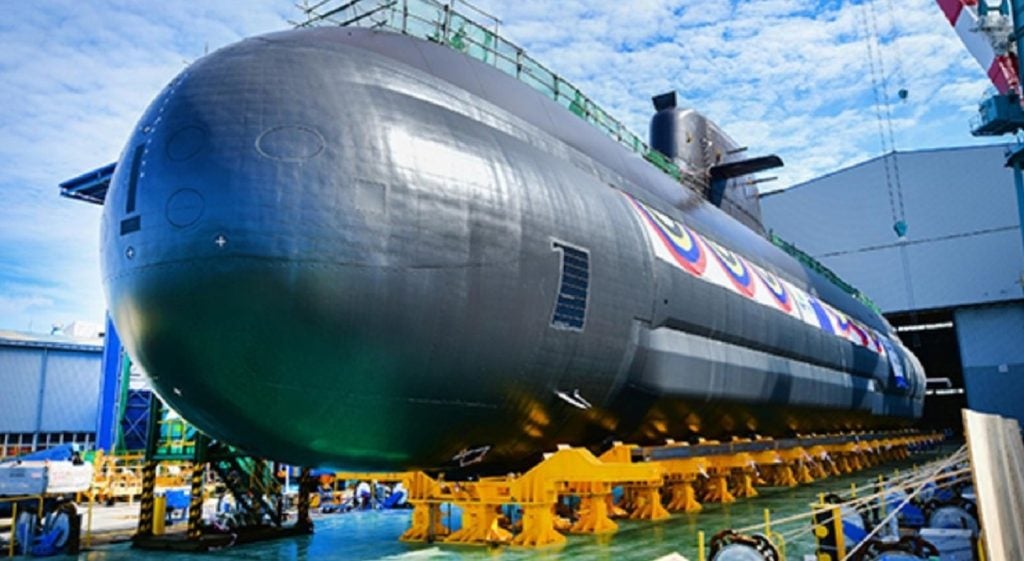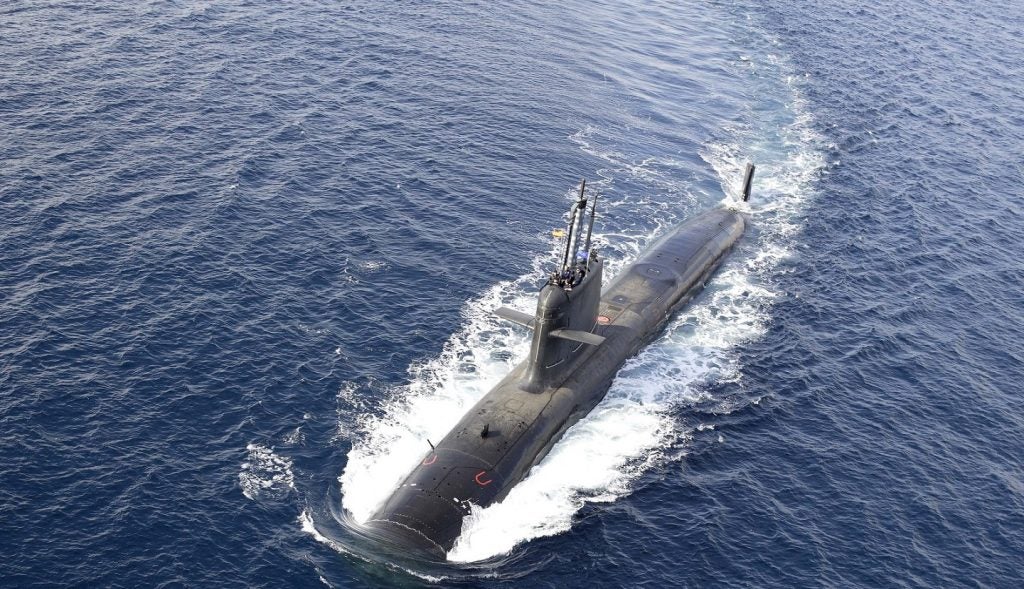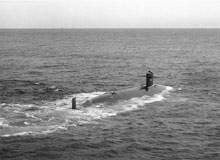
USS Thresher (SSN-593)
USS Thresher (SSN-593) sank while conducting deep-diving tests southeast of Cape Cod on the 10th of April 1963. The accident, which took the lives of all 129 men onboard, remains the highest ever submarine death toll in history.
USS Thresher was the lead boat in a class of 3,700t nuclear-powered attack submarines. Thresher had sent distorted signals of minor problems to submarine rescue ship Skylark before sinking within few minutes. The submarine was travelling in a depth of about 1,300ft at the time of the accident.
The bathyscaph Trieste working alongside the oceanographic ship Mizar and other vessels deployed in an extensive underwater search found the wreckage of Thresher on the sea floor, at a depth of 8,400ft. A piping failure resulting in the loss of power was identified as the major cause of the accident.
K-141 Kursk
All 118 men aboard the K-141 Kursk perished when the Russian nuclear submarine sank in the Barents Sea on 12 August 2000. Kursk was an Oscar-II class cruise missile submarine commissioned into the Russian Navy in December 1994.
How well do you really know your competitors?
Access the most comprehensive Company Profiles on the market, powered by GlobalData. Save hours of research. Gain competitive edge.

Thank you!
Your download email will arrive shortly
Not ready to buy yet? Download a free sample
We are confident about the unique quality of our Company Profiles. However, we want you to make the most beneficial decision for your business, so we offer a free sample that you can download by submitting the below form
By GlobalDataKursk was one of the 30 vessels that took part in the “Summer-X” exercise. The submarine suffered an explosion while preparing to fire dummy torpedoes during the exercise. The leakage of high-test peroxide (HTP) from one of the Type 65 torpedoes was believed to have caused the explosion.
The explosion completely destroyed the first three compartments. 23 of the 118 crew were left alive in the ninth compartment when the submarine hit the seafloor but they died subsequently due to lack of oxygen.
USS Scorpion (SSN-589)
The USS Scorpion (SSN-589) sank 400 miles southwest of the Azores islands in the Atlantic Ocean while returning from a Mediterranean deployment in May 1968, killing all the 99 crew onboard. The USS Scorpion was a 3,500t Skipjack class nuclear-powered attack submarine commissioned into the US Navy in July 1960.
The USS Scorpion reported its position about 50 miles south of the Azores on 21 May 1968 and no issues were suspected until it failed to return to Norfolk on 27 May. The US Navy launched a search and the submarine was subsequently announced “presumed lost” on 5 June.
A deep-submergence vehicle, launched from the research ship USNS Mizar, identified remains of the Scorpion in October 1968 at a depth of more than 10,000ft. The accident was believed to have been caused by an inadvertent activation of the battery of a Mark 37 torpedo or a torpedo explosion.
HMS Thetis
The Thetis (N25) was a Group 1 T-class submarine built by Cammell Laird shipyard. The submarine was launched in June 1938 and embarked on sea trails in 1939. It was conducting final diving trials in Liverpool Bay when it sank taking the lives of 99 of the 103 crew aboard. The inrush of water flooding the torpedo tubes and then the bow section caused the submarine to sink to a depth of 150ft.
The submarine was repaired and re-commissioned into the Royal Navy as HMS Thunderbolt, but was destroyed by Italian corvette Cicogna in March 1943.
The crew discharged an indicator buoy, fired the smoke candle and alerted the submarine base HMS Dolphin. The stern was afloat for several hours, but only four crew members managed to escape while the rest perished due to suffocation.
K-129 (Golf II)
The K-129 submarine, which was one of the Project 629A (Golf II class) strategic ballistic missile submarines of the Soviet Pacific Fleet, sank on 8 March 1968 in the Pacific Ocean causing the death of all 98 crew aboard.
The K-129 was lost after leaving from Kamchatka on a patrol mission in February 1968. The submarine reported the position upon its test dive but sent no further communication. After unsuccessful attempts made by Soviet naval authorities at Kamchatka to contact K-129, the Soviet naval headquarters announced the K-129 “missing” by the third week of March.
The Soviet Navy conducted extensive search mission, but failed to locate the K-129. The submarine was later announced ‘lost with all crew’. The wreckage of the K-129 was found by the USS Halibut northwest of Oahu at a depth of about 16,000ft (4,900m) in August 1968. The cause of the accident is still unknown.
Ming 361
The Great Wall (Ming 361) was one of the Ming class diesel-electric submarines of the People’s Liberation Army Navy. All 70 men aboard the sub perished by suffocation due to a lack of oxygen in April 2003.
The submarine was conducting exercises in the Yellow Sea between Korea and Shandong Province at the time of the incident. Malfunction in the diesel engines which consumed the oxygen within the submarine caused the suffocation.
The crippled submarine remained afloat for ten days as it was on a no-contact mission. The half-submerged Ming 361 was finally identified by Chinese fishermen on 25 April 2003. The boat was towed from the accident location to its homeport at Qingdao.
K-8 – Project 627A submarine
The K-8 nuclear submarine, a Project 627 A (NATO code name: November class) of the Soviet Navy’s Northern Fleet, sank in the Bay of Biscaya on 8 April 1970 resulting in the death of 52 crew members.
The submarine suffered two fires in the third and seventh compartments while taking part in a naval exercise named Ocean-70. The crew was unable to suppress the fires after the reactor emergency systems were activated and both reactors were shut down, leaving the submarine with no power.
The control room and neighbouring compartments were filled with smoke caused by the fires. Some of the crew were evacuated before the submarine sank to a depth of 4,680m, while 52 men including the captain of the vessel perished due to CO2 poisoning and flooding during the rescue and damage control mission.
K-278 Komsomolets
The Soviet nuclear attack submarine K-278 Komsomolets, the only Project 685 Plavnik (NATO code name: Mike class) nuclear-powered attack submarine of the Soviet Navy, caused the death of 42 of 69 men aboard when it sank in the Norwegian Sea on 7 April 1989.
The K-278 Komsomolets suffered a fire accident when operating in the Norwegian Sea about 200 miles north of the Norwegian mainland. A fire that broke out in the seventh compartment of the vessel spread out to other sections and resulted in the shutdown of nuclear reactors leaving the sub with no power.
The situation was radioed in and most of the crew abandoned the ship while it was sinking. The remaining crew left in the sub tried to escape using emergency escape capsule, but only one among them survived. The Aleksey Khlobystov fishing boat picked up 30 crew members.
USS S-4 (SS-109)
The USS S-4 (SS-109), one of the S class submarines operated by the US Navy, took the lives of 38 men when it sank after colliding with the US Coast Guard cutter Paulding on 17 December 1977.
The submarine was rammed while it was carrying out underwater trials off Provincetown, Massachusetts. The collision created a hole on the hull causing water to rush into the inner hull. The submarine consequently sank to the sea floor in 110ft of depth.
The majority of the crew who reached the aft perished within a short time. Six men in torpedo room survived for more than a day, but they too lost lives as rescue efforts were hindered by a storm.
K-152 Nerpa
The Russian K-152 Nerpa suffered an accident when it was conducting an underwater test run in the Pacific Ocean causing the death of 20 men of 208 aboard. The Nerpa is an Akula-class nuclear-powered attack submarine.
The accidental activation of fire-fighting system released Freon gas into the air in the K-152 Nerpa. The members in the submarine suffered from suffocation and could not activate breathing kits. The rest of the crew were unaware of the situation until the warning sirens sounded after large amounts of gas had been released into the submarine.
Six crew and 14 civilian workers were killed and 21 people were injured. The casualties were transferred to a military hospital in Vladivostok. The submarine was delivered to India in December 2011 on a 10-year lease and is currently operated under the name INS Chakra by the Indian Navy.



.gif)

